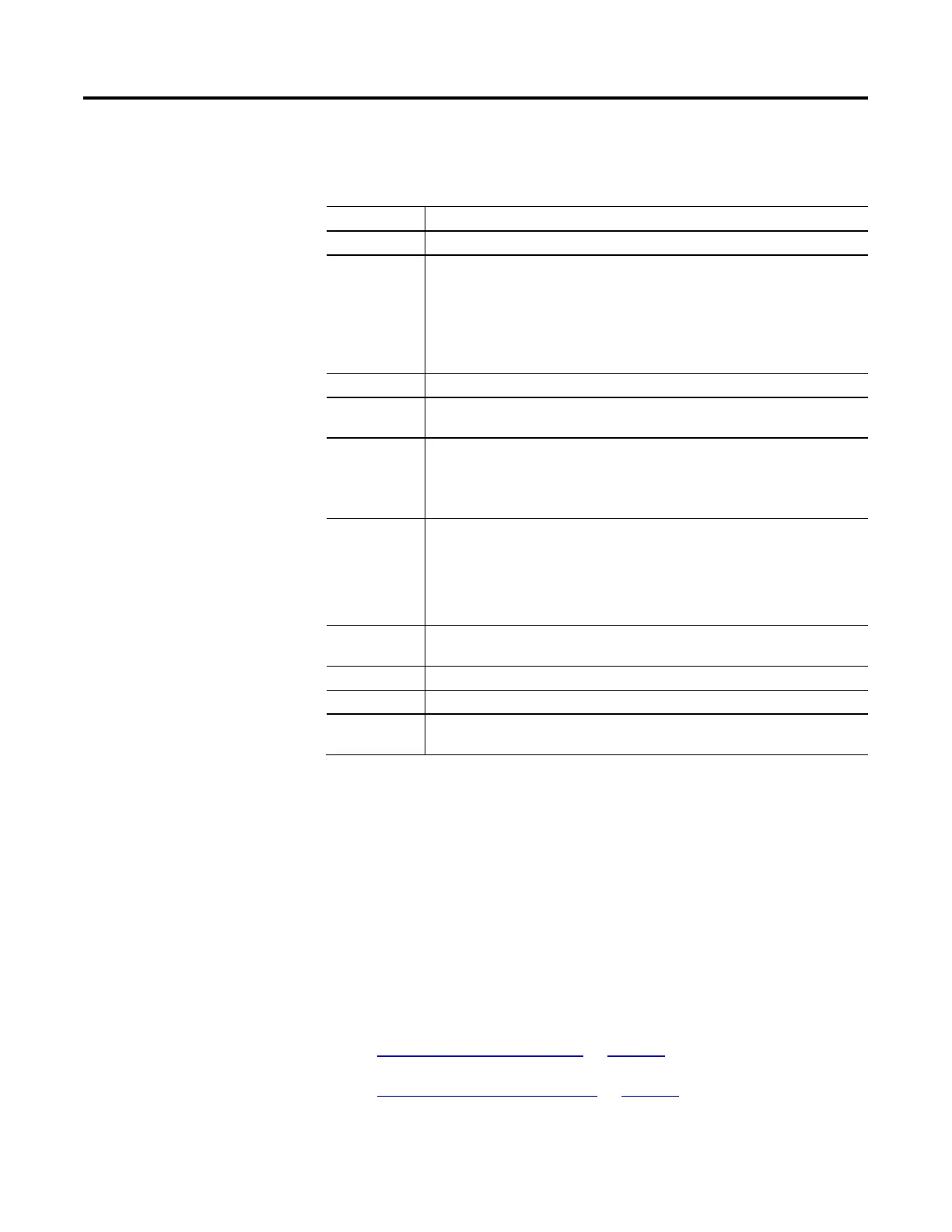Rockwell Automation Publication 1756-RM006K-EN-P - November 2018 483
When a tag is assigned to store the result of an Equipment Sequence command
(SCMD) instruction, the instruction returns one of these codes when it runs.
Code (Dec) Description
0 The command was successful.
48 The command was not executed because it was not possible at the time to generate an event to
record the command.
• If the command was an ABORT command, the ABORT command is still executed even if the event
could not be generated.
• This code only occurs if event generation has been enabled in the Equipment Sequence
Properties - Configuration tab.
24577 The command is not valid.
24578 The command is not valid for the current state of the Equipment Sequence. For example, if the
Equipment Sequence is in the running state, then a start command is not valid.
24579 The Equipment Sequence cannot be commanded for the following reason:
• The program successfully attached to the Equipment Sequence, but it cannot command the
sequence because Logix Designer, a higher priority application, has overridden ownership.
24582 Attachment to the Equipment Sequence failed because the sequence was previously attached to one
of the following users:
• An external sequencer, such as FactoryTalk Batch software, has ownership.
• Another program in the controller (an internal sequencer) has ownership.
• An operator using the Sequence Manager ActiveX Controls has ownership.
24580 The caller of the instruction is attached, but is not the current owner of the Equipment Sequence. A
higher priority owner, such as Logix Designer, is commanding the Equipment Sequence.
24594 The Equipment Sequence is unscheduled, inhibited, or in a task that is inhibited.
24604 An equal or higher priority command is being processed.
24631 Too many sequence parameter or step tags are defined per step, so events cannot be handled and
the START command failed.
Use the Result operand to get a code that shows the success or failure of the
SCMD instruction. The Result operand should contain either 0 or a DINT tag,
depending on whether ownership conflicts or other errors are likely to occur.
• If ownership conflicts or other errors are not likely, enter 0 in the Result
operand.
• If ownership conflicts or other errors are likely, enter a DINT tag in
the Result operand. The DINT tag stores a code for the result of the
execution of the instruction.
See also
Equipment Sequence command on page 473
Equipment Sequence Instructions on page 465
instructions

